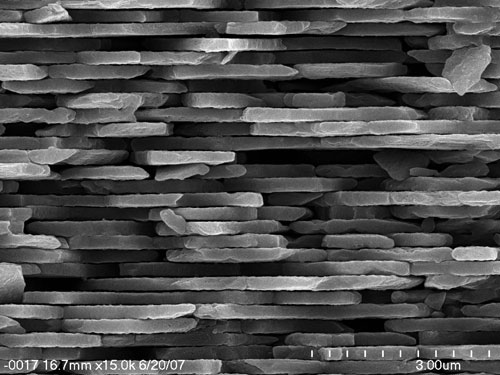
1Marine Sciences Research Center, Stony Brook University, Stony Brook, NY 11794. 2Divsion of Paleontology, American Museum of Natural History, New York, NY 10024. 3Department of Geology, University of South Florida, Tampa, FL 33620. 4Department of Geology and Geophysics, Yale University, New Haven, CT 06511. 570 Estes St., Lakewood, CO 80226
Evaluating the effects of preservation on isotopic signatures of Sr, O, and C is critical to the use of these tracers in reconstructing salinity and temperature gradients in ancient oceans. We have analyzed a series of samples from the Baculites compressus zone of the Pierre Shale (Campanian) of South Dakota. Samples included outer shell material and septa of cephalopods from inside and outside concretions. Preservation was evaluated using light microscopy and scanning electron microscopy (SEM). And SEM preservation index (PI) was established based on comparison of the microstructure of fossil material with that of modern analogs. For example, the nacreous microstructure of cephalopod shells was rated excellent (PI=5) if, by comparison with modern Nautilus, the nacreous plates were well defined with discrete, angular boundaries. In contrast, samples showing fused nacreous plates with indistinct boundaries were rated poor (PI=1). 87Sr/86Sr ratio vary with preservation and average 0.707311±0.000176 (n=13) for PI = 1 to 2, 0.7.7591±0.000055 (n=13) for PI = 3 to 4, and 0.707656±0.000067 (n=8) for PI = 4.5 to 5. In comparison, seawater 87Sr/86Sr for B. compressus time has been estimated to be 0.707674 (McArthur et al. 1994). That data suggests that, as preservation declines, the mean 87Sr/86Sr ratio decreases and the variation of the ratio increases. Oxygen and carbon isotopic analyses of the same samples show similar trends with preservation, and δ18O, δ13C and 87SR/86Sr are well correlated, suggesting that these tracers are all altered as preservation decreases. We concluded that SEM preservation criteria are effective in screening shell material that records original isotopic signatures and that variations in Sr, O, and C isotopic composition in well-preserved material can be used to assess paleoenvironmental parameters, such as salinity and temperature.
J. Kirk Cochran is a faculity member at the Marine Sciences Research Center at Stony Brook University. Neil H. Landman is the Curator-in-Charge of Invertebrate Paleontology at AMNH. Karl K. Turekian is a professor of Geology and Geophysics at Yale University.